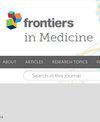摘要
背景:急性肾损伤(AKI)常常伴随着心脏瓣膜手术,并会恶化患者的预后。我们的研究旨在确定心脏瓣膜手术患者术前和术中发生急性肾损伤的独立风险因素。利用这些因素,我们建立了一个心脏瓣膜手术后 AKI 风险预测模型,并进行了外部验证:我们的回顾性研究在 2023 年 2 月至 8 月间招募了 497 名接受心脏瓣膜手术的成年患者作为衍生队列。我们获取了患者的人口统计学资料,包括病史和围手术期临床信息,并根据肾脏疾病:改善全球结局》(KDIGO)指南将患者分为 AKI 和非 AKI 两组。通过二元逻辑逐步回归分析,我们确定了心脏瓣膜手术后独立的 AKI 风险因素。最后,我们构建了一个提名图,并在由 200 名患者组成的验证队列中进行了外部验证。根据接收者操作特征曲线下面积(AUC)、校准曲线和决策曲线分析(DCA)对提名图的性能进行了评估:结果:在推导队列中,172 名患者发生了 AKI(34.6%)。与非 AKI 患者相比,AKI 患者的术后并发症发生率更高,预后更差。根据多变量分析,高龄(OR:1.855;P = 0.011)、术前高血压(OR:1.91;P = 0.017)、冠心病(OR:6.773;P = 0.015)、D-二聚体(OR:1.001;P = 0.038)、血浆肌酐(OR:1.025;p = 0.001)、心肺旁路(CPB)持续时间(OR:1.011;p = 0.001)、重复 CPB(OR:6.195;p = 0.010)、术中输注红细胞(OR:2.560;p p = 0.009)是 AKI 的独立危险因素。推导组和验证组的提名图AUC分别为0.814(95%CI:0.775-0.854)和0.798(95%CI:0.726-0.871)。此外,校准曲线显示,预测结果与实际观察结果一致。最后,DCA 曲线显示,提名图具有良好的临床应用价值:结论:心脏瓣膜手术后的 AKI 发生受多种围手术期因素的影响,导致患者预后不良。所提出的 AKI 预测模型既敏感又精确,有助于临床筛查高危患者。Background: Acute kidney injury (AKI) often accompanies cardiac valve surgery, and worsens patient outcome. The aim of our study is to identify preoperative and intraoperative independent risk factors for AKI in patients undergoing cardiac valve surgery. Using these factors, we developed a risk prediction model for AKI after cardiac valve surgery and conducted external validation.
Methods: Our retrospective study recruited 497 adult patients undergoing cardiac valve surgery as a derivation cohort between February and August 2023. Patient demographics, including medical history and perioperative clinical information, were acquired, and patients were classified into one of two cohorts, AKI and non-AKI, according to the Kidney Disease: Improving Global Outcomes (KDIGO) guidelines. Using binary logistic stepwise regression analysis, we identified independent AKI risk factors after cardiac valve surgery. Lastly, we constructed a nomogram and conducted external validation in a validation cohort comprising 200 patients. The performance of the nomogram was evaluated based on the area under the receiver operating characteristic curve (AUC), calibration curves and decision curve analysis (DCA).
Results: In the derivation cohort, 172 developed AKI (34.6%). Relative to non-AKI patients, the AKI patients exhibited elevated postoperative complication incidences and worse outcome. Based on multivariate analysis, advanced age (OR: 1.855; p = 0.011), preoperative hypertension (OR: 1.91; p = 0.017), coronary heart disease (OR: 6.773; p < 0.001), preoperative albumin (OR: 0.924; p = 0.015), D-Dimer (OR: 1.001; p = 0.038), plasma creatinine (OR: 1.025; p = 0.001), cardiopulmonary bypass (CPB) duration (OR: 1.011; p = 0.001), repeat CPB (OR: 6.195; p = 0.010), intraoperative red blood cell transfusion (OR: 2.560; p < 0.001), urine volume (OR: 0.406 p < 0.001) and vasoactive-inotropic score (OR: 1.135; p = 0.009) were independent risk factors for AKI. The AUC of the nomogram in the derivation and validation cohorts were 0.814 (95%CI: 0.775-0.854) and 0.798 (95%CI: 0.726-0.871), respectively. Furthermore, the calibration curve revealed that the predicted outcome was in agreement with the actual observations. Finally, the DCA curves showed that the nomogram had a good clinical applicability value.
Conclusion: Several perioperative factors modulate AKI development following cardiac valve surgery, resulting in poor patient prognosis. The proposed AKI predictive model is both sensitive and precise, and can assist in high-risk patient screening in the clinics.

 求助内容:
求助内容: 应助结果提醒方式:
应助结果提醒方式:


